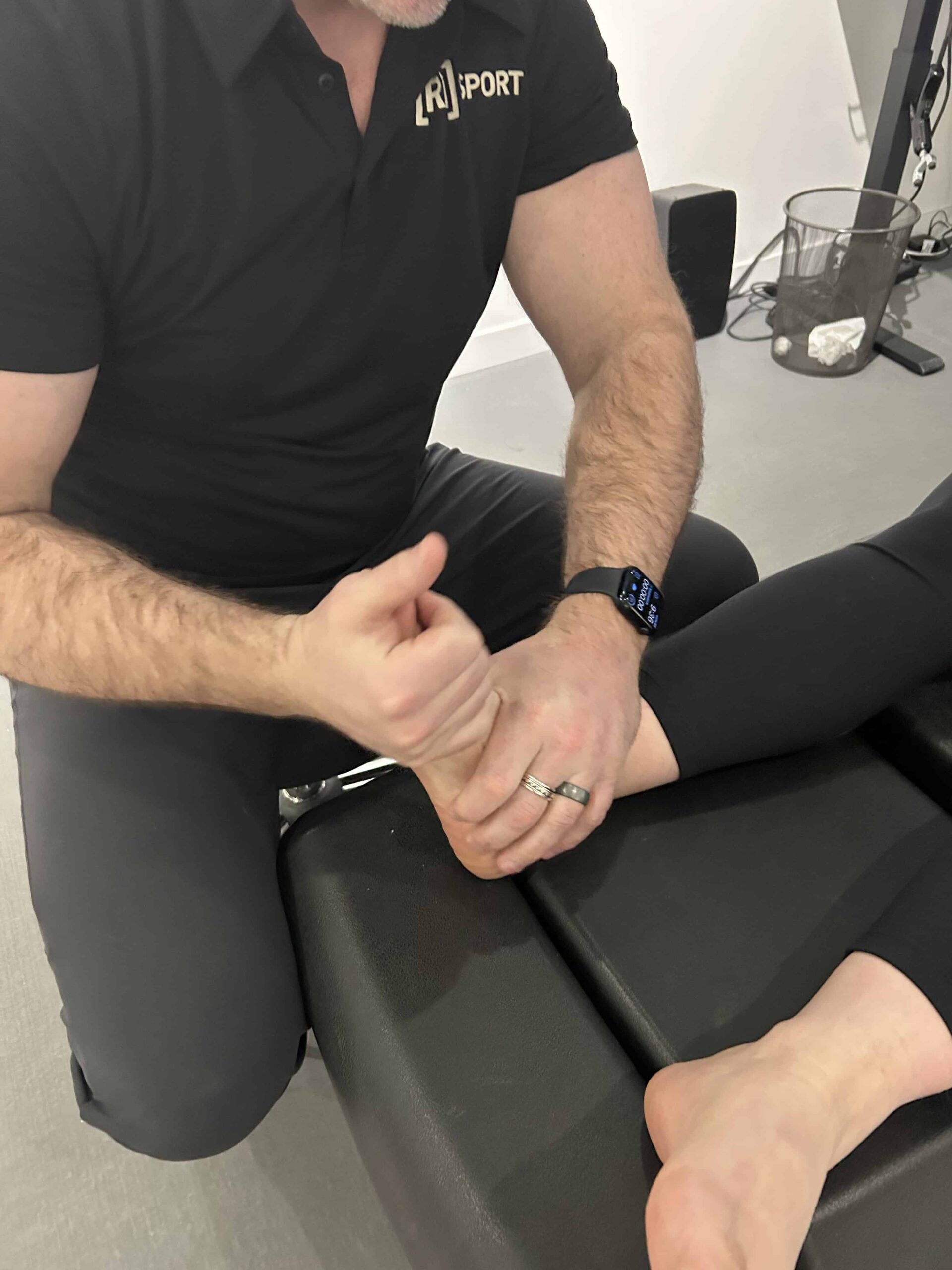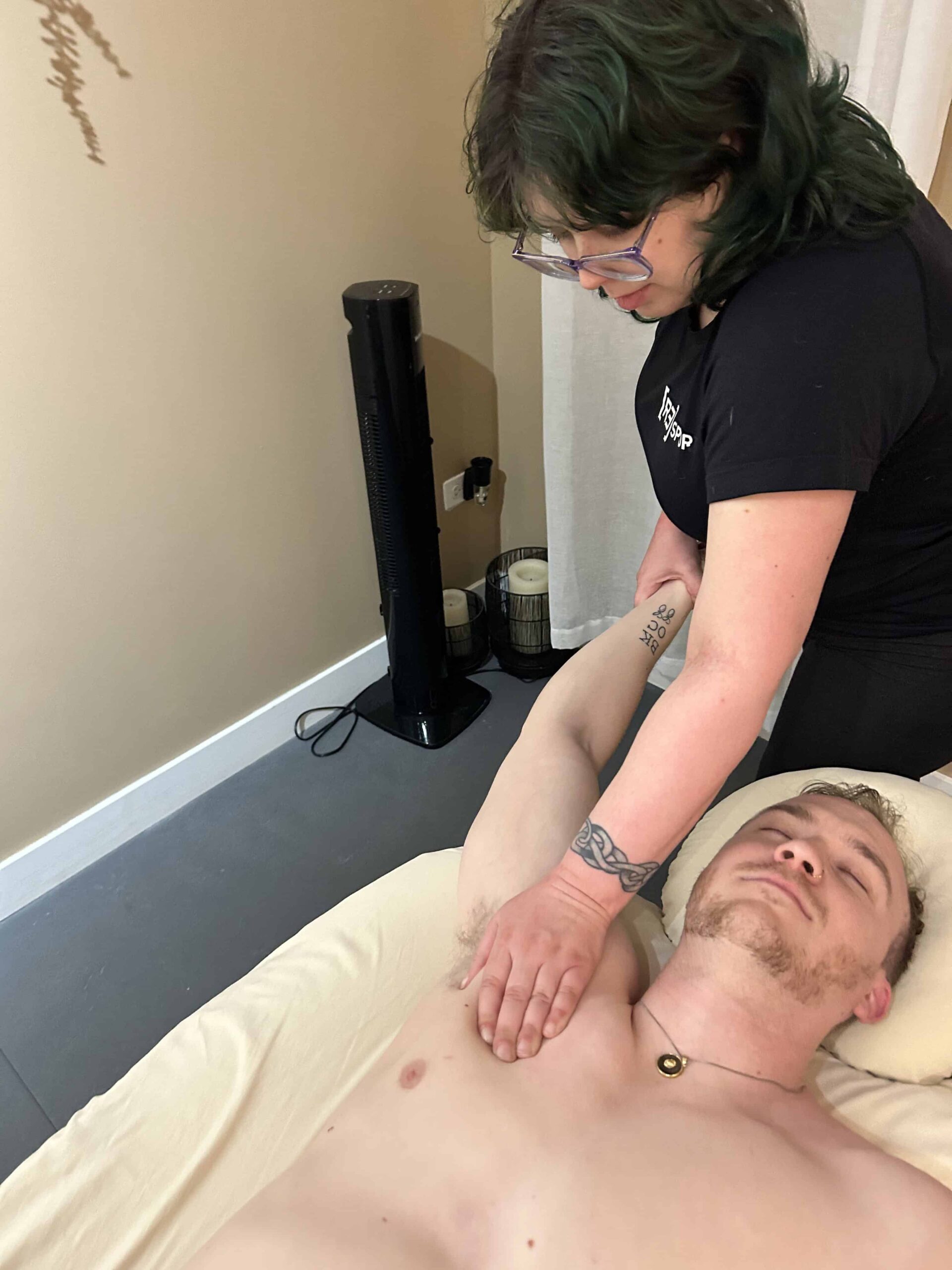
Soft tissue therapy is a broad term that includes various hands-on techniques used to treat pain in your body’s soft tissues. These soft tissues include muscles, tendons, ligaments, fascia (connective tissue that surrounds your muscles and organs), and nerves.


Soft tissue therapy includes a wide range of techniques like dry needling, trigger point therapy, massage therapy, joint mobilization, myofascial release, and stretching and strengthening exercises. The goal is to reduce pain and inflammation, improve flexibility and range of motion, promote healing after injuries, and enhance circulation.
If you’re experiencing pain, tightness, or limitations in your movement, soft tissue therapy is a great treatment option. It’s also a valuable tool for athletes looking to improve flexibility and performance, or for those seeking stress reduction and relaxation.
Schedule an appointment with our team to see if soft tissue therapy is a good option for you. We’d love to discuss a personalized plan to help you get pain free.


Soft tissue therapy offers a host of benefits for people struggling with pain, tightness, and limitations in their movement, including:
Soft tissue therapy is most effective when used as part of a comprehensive treatment plan. We’ll discuss this with you after learning about your specific needs.


Based on your specific needs and treatment plan we discuss, there are a host of treatment options we’ll use, including:
Myofascial Release: Myofascial release uses sustained pressure to reduce tension and unlock trigger points within both muscles and the fascia that surrounds them.
Joint Mobilization: This involves using gentle, controlled movements to improve your joint’s range of motion and ease stiffness. This hands-on technique helps loosen tight muscles and tissues surrounding the joint, ultimately leading to better flexibility and movement.
Soft Tissue Mobilization: This approach directly targets injuries by applying specific movements. These movements help break down adhesions and scar tissue that can form in muscles and tendons after injuries, promoting healing and restoring flexibility.
Trigger Point Therapy: This targets those tight, hypersensitive knots in muscles called trigger points. By applying pressure and using various techniques, therapists aim to release the tension in these trigger points, which can not only ease pain at the knot itself but also alleviate discomfort radiating to other areas. Learn more.
Dry Needling: Dry needling targets tight muscles and trigger points by inserting thin needles directly into them. This stimulation helps to relax the muscle fibers, improve blood flow, and promote the body’s natural healing process. Learn more.
Stretching and Strengthening: Engage in specific stretches and strengthening exercises designed to improve flexibility, strength, and mobility in the affected areas. This will help restore optimal movement and function.

Soft tissue therapy is a broad term encompassing various hands-on techniques, including massage. While massage is a core technique, soft tissue therapy can also incorporate treatments like trigger point therapy, dry needling, and joint mobilization.
A soft tissue specialist uses various hands-on techniques like massage and trigger point therapy to target muscles, tendons, and fascia. Their goal is to reduce pain and inflammation, improve flexibility, and promote healing after injuries. Our team helps manage your chronic pain, enhance your athletic performance, and reduce your stress.
Soft tissue massage is good for reducing pain and stiffness by targeting your muscles and fascia. It can be helpful for managing chronic pain, improving flexibility and range of motion, recovering from injuries, and enhancing athletic performance.
While there isn’t one specific doctor who treats only soft tissue, physical therapists and chiropractors are qualified to evaluate and treat you.
Four types of soft tissue in your body include: